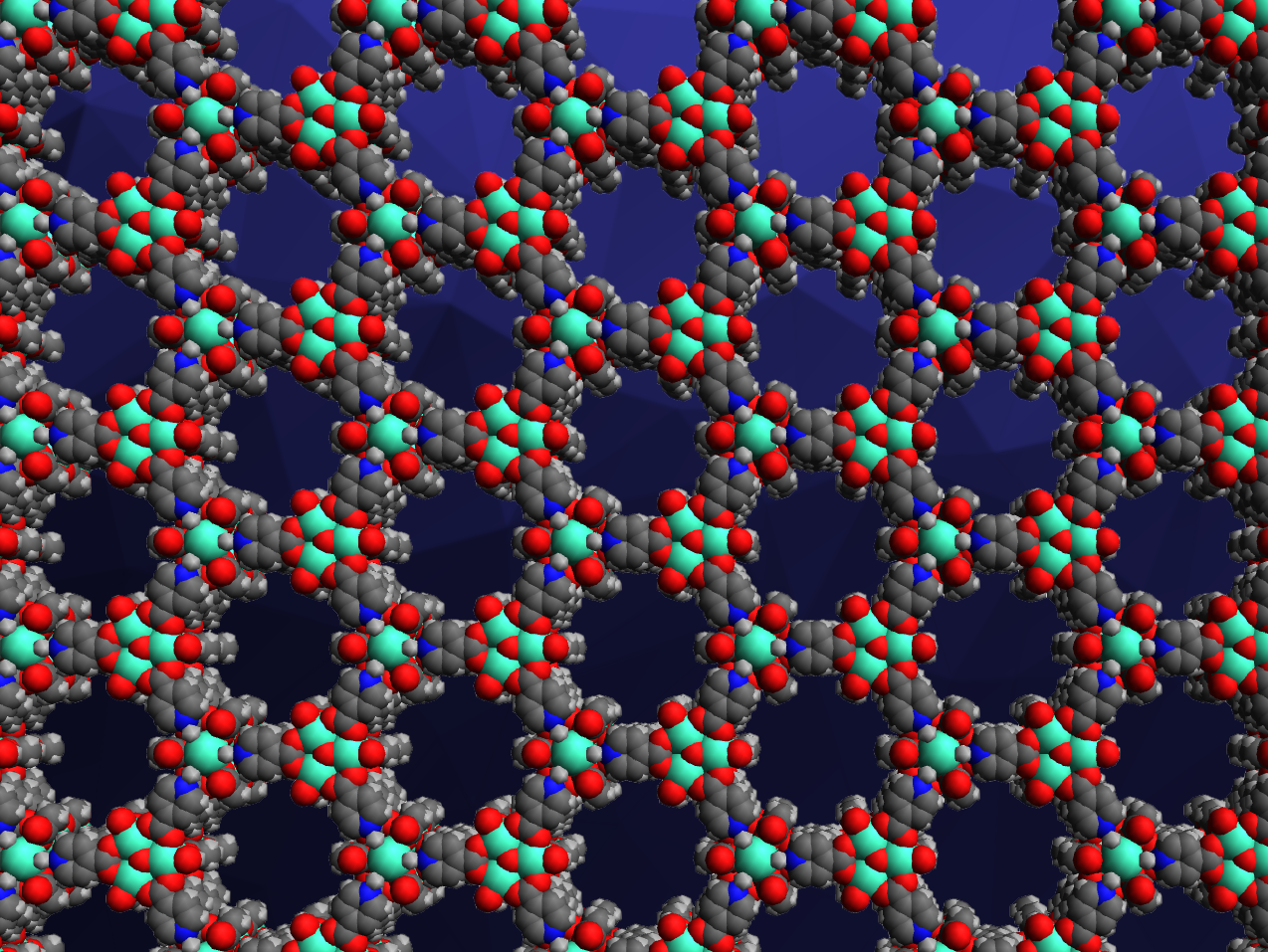Metal–organic frameworks (MOFs) are crystalline, porous materials composed of metal centers and organic linkers. They have applications, e.g., in catalysis or gas separation. MOFs that are electrically conductive could also be useful, for example, in electrocatalysis, supercapacitors, batteries, or sensors. However, MOFs for such applications need to be stable under challenging conditions. MOFs built with the hard/soft acid/base (HSAB) principle in mind can have improved stabilities, but are not usually conductive.
Ruihua Zhang, Xiamen University, China, Xiang-Jian Kong, Yang Cao, Xiamen University and Innovation Laboratory for Sciences and Technologies of Energy Materials of Fujian Province (IKKEM), Xiamen, China, and colleagues have developed MOFs that follow the HSAB principle, but are electrically conductive due to additional π–π stacked aromatic rings in the framework. The team prepared a series of MOFs of the type {[Ln4(μ4-O)(μ3-OH)3(INA)3(GA)3](CF3SO3)(H2O)6}n (Ln = Gd, Tm, Lu; INA = isonicotinic acid, GA = glycolic acid) via solvothermal reactions at 150 °C.
Using single-crystal X-ray diffraction, the researchers confirmed that the frameworks feature parallel chain-like structures that are connected by π–π stacking interactions. The team measured the electrical conductivities along the c-axes of single crystals of the MOFs and found that the conductivities rise in the order Gd<Lu<Tm. This is due to smaller distances between the stacked aromatic rings that coincide with the smaller ion radii of Lu3+ and Tm3+ compared with Gd3+. The MOFs were found to be stable under harsh conditions, such as in acidic or basic solutions, at elevated temperatures, or in strong electric fields. Overall, the work could be useful for the development of durable and electrically conductive MOFs.
- Conductive Lanthanide Metal–Organic Frameworks with Exceptionally High Stability,
Chao-Long Chen, Cong Wang, Xiu-Ying Zheng, Ruihua Zhang, Yiling Xu, Gui-Lin Zhuang, La-Sheng Long, Lan-Sun Zheng, Xiang-Jian Kong, Yang Cao,
J. Am. Chem. Soc. 2023.
https://doi.org/10.1021/jacs.3c05336



